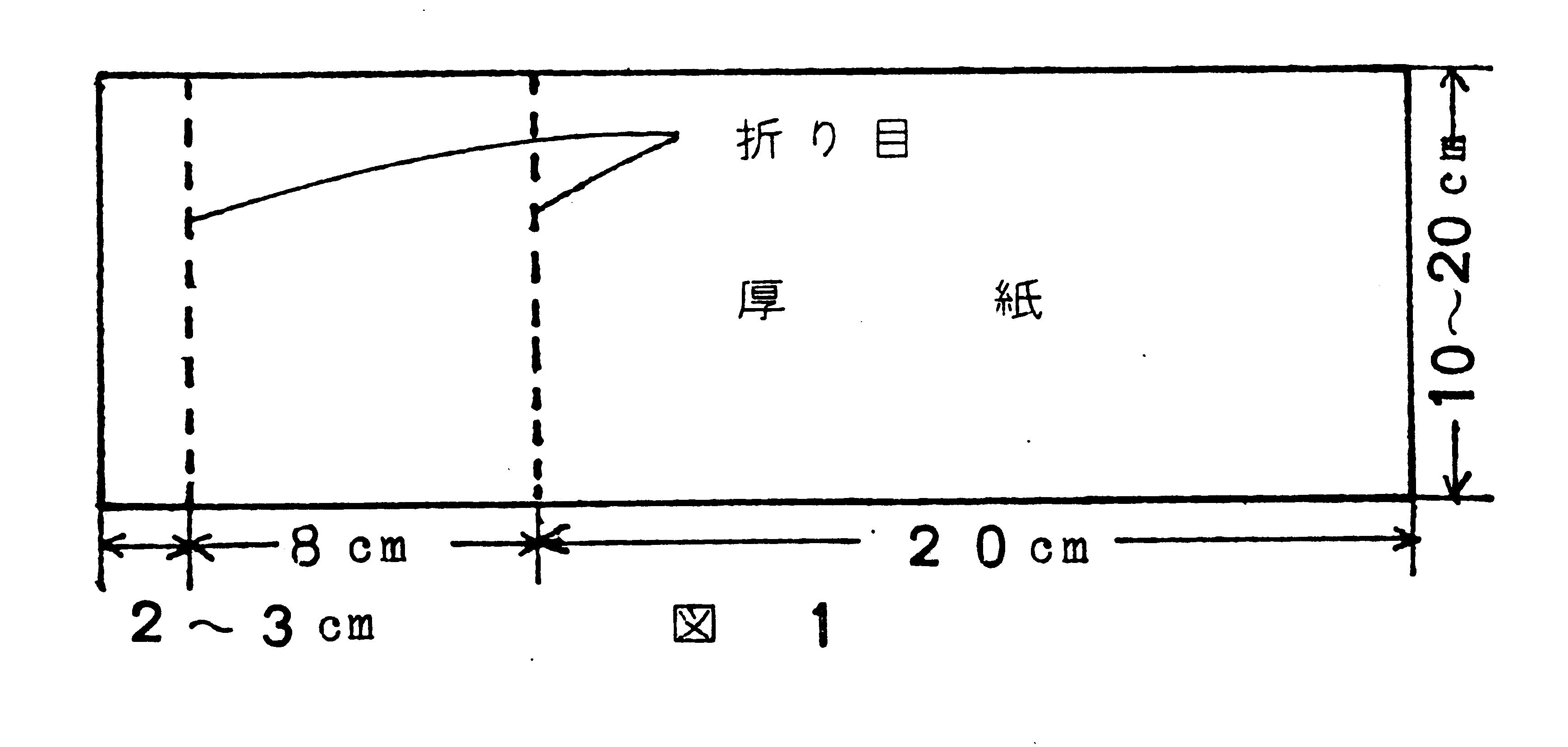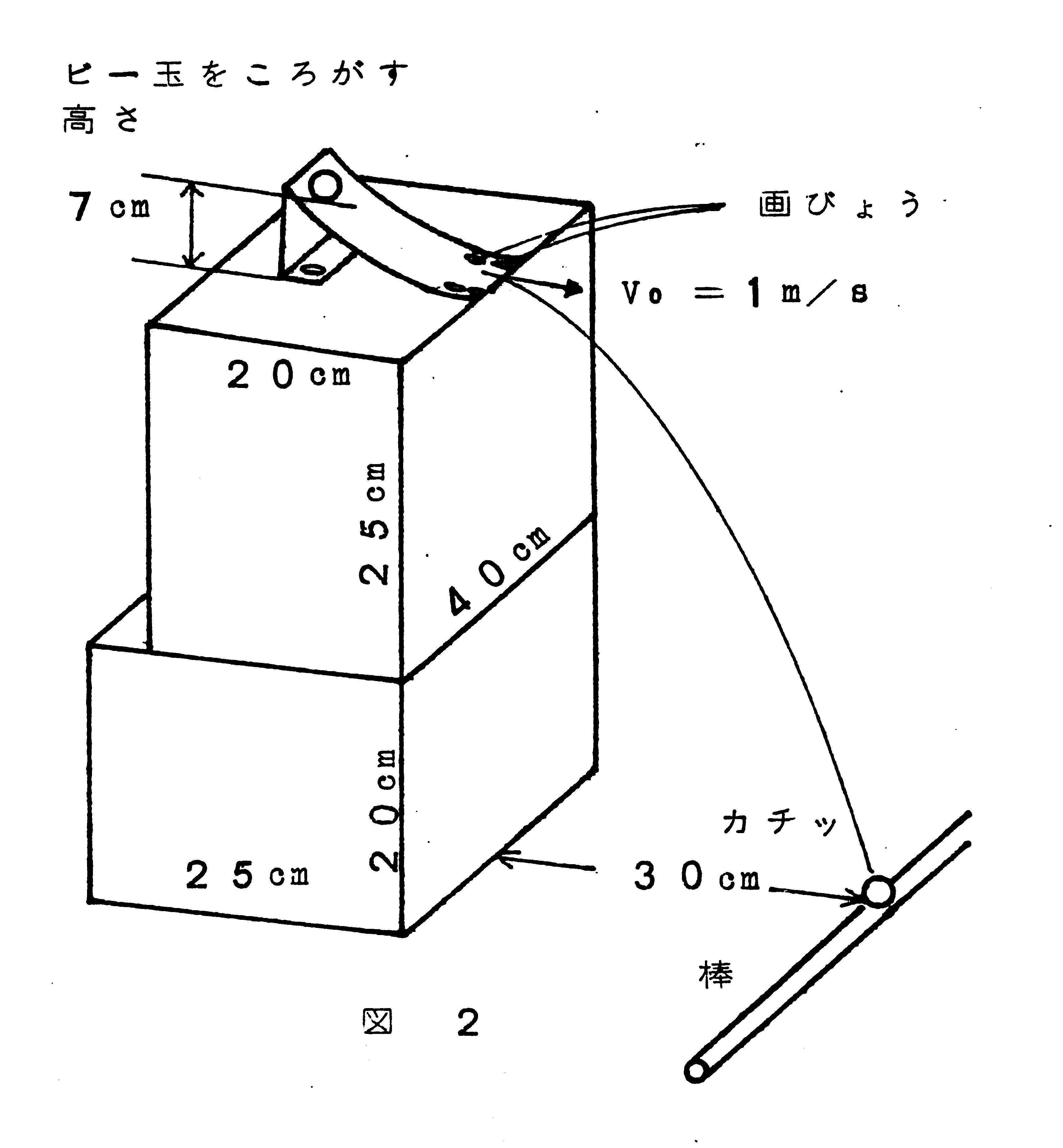return to materials for physics education
return to English homepage
Parabolic movement by using boxes
This is the first presentation in English by Hu Tiang TODA
Aim
When we throw an object horizontally, it will shift horizontally
uniformly and then
the virtical movement will be a free fall, that is, a
movement of uniform accelaration.
When we think of parabolic movements, we see often some photos by electric flash in any textbook.
But they are only static records of the movement.
It is not so interesting and dose not get exciting either.
We cannot use any time-recorder in this case in 2 dimension either.
We cannot expect any climax in our class.
As I have an idea to demonstrate a parabolic movement, I show you how to make
a device for the simple demonstration.
We would like to demonstrate in any experiment usually.
We can make sure that the result fits the theory before our students.
Although we don't want to take our own time so much for making
devices, this device is so good as to get exciting
If we spend much time to make the device once, then we can demonstrate easily
from the next time.
Therefore, we had better to make effort to developping good devices for our students to welcome.
No matter how attractive the demonstration may be, we cannot start making the device in busy days.
Therefore however difficult to make the device may be, we would like to challenge to making
it.
Because we can use the device easily from the next time if we have made it once.
Where do we use the device?
I show you a question from "Hypothesis Experiment Classbook" 'force and motion'
(cf. reference 1)
Question
When a marble starts with speed of 1 m/s horizontally, what curve dose it draw?

- When it drops 20cm, what cm will it shift horizonntally?
- How about the case of 80cm drop?
Preparation
-
Please make two wooden boxes (outside measurement 20cm*5cm*40cm).
They are usefull to be a table for another demonstrstion.
You may always use them as containers while you do not demonstrate.
How about another way to use?
- Please prepare a piece of cardboard shown in Figure 1 , a marble and six thumbtacks.
When you use two wooden boxes which you
have made, you can get the distances of free fall every 0.1s with them.
For example the height of a box is 25cm and the other is 20cm.
How cm is the differece of them?
It is 25-20=5cm. You can get the distance when a marble drop in 0.1s easily.
Please try to use two boxes when the marble drop in 0.2s, 0.3s, 0.4s.
We can use wooden chairs of box-type in science classroom of our school.
Do you have any wooden boxes in your school?
I have found wooden boxes(outside measure 20cm*25cm*45cm and 20cm*30cm*55cm) in our school.
We can use these boxes too.(cf. refference 2)
Please tack an inclined plane made of cardboard shown in fig. 1 to the upper box with six thumbtacks.
And then roll a marble from the height 7cm. Then it fly out with speed 1m/s horizontally.(cf.reference 1)
The marble drop virticaly as a free fall, and it shift horizontally uniformly with speed 1m/s.
Then we can get the position of it as follows.

| time | vertical drop | horizontal shift |
|---|---|---|
| t=0.1s | 5cm(25-20) | 10cm |
| 0.2s | 20cm | 30cm |
| 0.3s | 45cm(20+25) | 30cm |
| 0.4s | 80cm(40+40) | 40cm |
In a physics textbook for experiment they use a carbon copy under a
piece of paper on the floor to know the point that the marble will drop.
Then I think more.
We get the positions of the marble every 0.1s by using two boxes as shown in the figure 2.
In order to know the dropping point I put a thin bar on the floor where the marble will
come.
It is effective so much.
When it drop on the floor,it hits the bar and you will be able to hear the click shown in fig.2.
As calculated theoreticaly ( gravity acceleration g = 10m/s2 is enough ) the click impress them so
much.
Moreover we can demonstrate easily as some errors are allowed because of the thickness of the bar.
-
Please note that the marble start horizontally.
Therfore it is important to make accurate boxes and then tack four thumbtacks near the point for the marble to start horizontally. -
As the energy loss increases according to the kind of cardboard, you
may not get the initial speed v0=1m/s calculated theoretically when you roll from the height
7cm.
Then please roll the marble from the somewhat higher position and make sure that the initial speed is v0=1m/s.
(for example : Make sure that the horizontal distance is 20cm, when the marble fly out from the height of 20cm.)
Reference
-
"科学教育研究 Study of science education " No.6 1971年「力と運動」とその解説
' force and motion and its explanation' Kiyonobu
ITAKURA 板倉聖宣
Now you can read the book in English : HYPOTHESIS-EXPERIMENT CLASS by Kiyonobu ITAKURA ; published by Kasetu-sha in Japan - "THE JOURNAL OF SCIENCE EDUCATION" Japanese Magazine Nov.1977 special isssue ' 運動量と力積の実験の工夫 : experiment of momentum and impulse ' IIDA Yoji
- "THE JOURNAL OF SCIENCE EDUCATION" Japanese Magazine Nov. 1976 special issue ' 高校物理投げ込み実験アラカルト a la carte of thrown-in experiments for physics class in high school '
2022/01/28 I am trying to make boxes using box joint by myself.
I will show you how to make boxes with box joint,when I shall be able to make boxes of box joint
return to
materials for physics education
return to English homepage
return to物理教育教材の目次(contents of materials for
physics education in Japanese)
return to日本語のホームページ(homepage in Japanese)